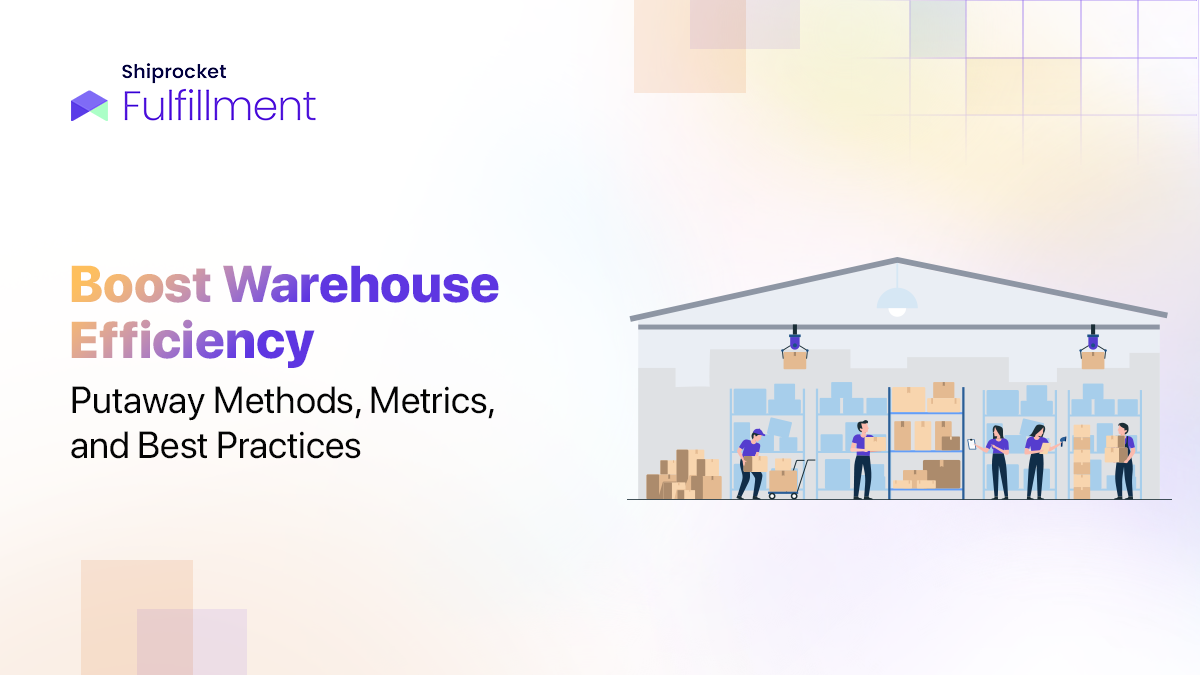Introduction
Many of us eagerly await the release of the latest gadgets, often pre-ordering them due to their immense popularity. But the high demand for these products isn’t just because they’re trendy; it’s also because there’s a shortage of the essential materials needed to make them. The COVID-19 pandemic has caused a lot of chaos in the global supply chain, making it difficult to get the materials needed for manufacturing. To tackle this issue and create a more flexible supply chain, it’s essential to understand how things are made and put together.

One valuable manufacturing technique to grasp is called “decoupling inventory.” In this discussion, we’ll break down what it is, how it works, and the best ways to use it. It will help you keep your workflows going despite unavailability and supply shortages, delays, and disruptions.
Let’s explore decoupling inventory in detail.
Defining Decoupling Inventory and Its Role in Supply Chains
The process of placing aside extra raw materials or components to ensure there are no delays or roadblocks in the production of completed products and services when there happens to be a critical supply shortage or breakdown of equipment is called decoupling inventory.
Decoupling inventory is very similar to an eCommerce platform that stores supply buffers. However, decoupling inventory is done by manufacturers to ensure that their orders remain completed concerning their timeline despite the occurrence of a disruption. Moreover, decoupled inventory has a list of advantages for assembly and manufacturing that differ from why online retailers or eCommerce businesses hold additional inventory.
A manufacturer’s extra inventory is decoupled as a manufacturing line with interdependent processes that will hold inventory at each leg of production. These legs of production are termed decoupling points. In cases where there is a breakdown of machines or equipment or changes in the production rates, the manufacturing processes do not stop.
For those businesses that use the same type of materials to make different goods, decoupling can also refer to the process of diverting extra production inventory for immediate use to make more orders that are time-sensitive in cases of supply shortages.
Advantages of Decoupled Inventory
An effective and simple method to help you protect your product production from slowing down or halting due to shortages and equipment failure is by having an adequate decoupling stock.
Here are some of the major benefits of having a surplus inventory:
- Protection against uncertainty
When manufacturers do not get the raw materials required to make the products, the production line halts at a specific point, delaying the overall process. Decoupled inventory is necessary at every step of the production line. It ensures security against such uncertainties and builds an agile and resilient supply chain system. This way, irrespective of the availability of the raw materials, the production line continues. A security blanket of extra material will always be set for you to continue this production line without hindering your timelines.
Decoupling inventory is also extremely advantageous for producers to make different products with similar raw materials. For instance, a baker is struggling to meet the sudden rise in demand for cupcakes due to a sudden scarcity of refined wheat flour. Thus, to ensure that the production continues, flour stock designated for another product that sells at a lower rate was diverted to the production of cupcakes so that the production line could continue and fulfill all the orders in greater demand.
- Gives you the time for maintenance and repairs
Decoupling inventory is also more advantageous in cases where a facility shuts down because of specific mandatory repairs and equipment maintenance. When there is a sufficient spare inventory at every step of the production line, the producers can continue to fulfill orders while adhering to the timeline despite the maintenance or failure of the machinery.
To ensure that the assembly and production workflows do not stop when repairs and maintenance issues arise, the manufacturers must hold a certain amount of buffer time to keep these workflows running. A buffer of products in the form of decoupled inventory allows you to keep going.
Implementing Decoupled Inventory Successfully
To complete your orders on time, most online brands and eCommerce platforms tend to purchase additional safety stock that exceeds the forecasted demand to keep as a buffer. If you own an enterprise that provides homemade or handmade products that need assembly, you can learn a few things from how large manufacturers manage their inventory.
To completely understand this concept, here is a step-by-step overview:
- Step 1: Analyse the current inventory levels of your base materials or those in progress at every decoupling stage throughout your production process.
- Step 2: Reiterate and reevaluate your historical data for orders and study your trends so that you can forecast demands strategically.
- Step 3: Determine with costs the amount of excess raw materials you can afford to purchase immediately after the demand has been nullified.
- Step 4: After you understand how much immediate raw material you have, you can establish an inventory replenishment schedule based on the mean delivery timelines to procure material.
- Step 5: Track your inventory accurately and monitor your past order trends for every SKU while adapting to your decoupled strategy accordingly.
You must understand that you must change your decoupled inventory strategy with time. Ensuring that you keep an eye on your holding and operating costs is key to being cautious of accumulating excess inventory. In cases where the raw material expires, it is crucial to stock the right amount.
Decoupled Inventory vs. Pipeline Inventory
Decouple inventory is often confused and misinterpreted as pipeline inventory or vice versa. Although pipeline and decouple inventory bear many similarities regarding their merits and usage, they are quite different. Interestingly, both pipeline and decoupled inventory strive to make the supply chain more agile and efficient, and their primary goal is to compensate for the time lost.
The main difference between the two is that decoupling inventory refers to the material the manufacturer has. Pipeline inventory refers to what material has been purchased but not yet on hand and thus cannot be used.
The inventory is decoupled when reserve material is set aside at every instance of the production line. When there is a supply shortage, these come in handy.
Alternative Strategies for Preventing Stockouts
Retail fulfillment is ensured through decoupling inventory, particularly if your goods need machinery or assembly to finish an order. If you sell finished goods, you have little control over the production. But there are several methods to ensure you meet the rapid demand irrespective of production delays. Partnering with different manufacturers or producers helps minimise the risk of supply shortages.
Here are some methods that can act as alternatives for preventing stockouts
- Precise calculation of your safety stock
Most eCommerce enterprises tend to calculate their safety stock to understand how much additional stock they can afford to purchase and have immediately on hand in cases of an emergency or failure of the supply chain that shall cause a delay in order fulfillment.
The formula to calculate safety stock is given as:
Safety Stock = ( Maximum everyday usage x maximum lead time)-(mean daily usage x Mean lead time)
Ensure you also consider carrying costs and the duration of your product storage before expiration. Otherwise, you are at a great risk of accumulating dead stock.
- Demand forecasting
By collecting, analysing, and studying accurate historical data and records of your supply chain, it is possible to determine future demand trends. Despite it not being 100% accurate, it gives you a general idea to understand your future needs. It helps you plan and manage your inventory levels and optimise them.
Tracking your data, records, and trends is key to inventory management. However, if you are keeping track of all of these on different spreadsheets, it’s time they stopped and you adopted a new method to optimise your supply chain process. Investing in technology that allows you to gain real-time analytics and insights regarding your inventory levels can help you manage your warehouses more efficiently and meet your demand for finished goods.
Conclusion
Decoupled inventory is a preventive method that allows you to have excess on-hand inventory to ensure your production line never encounters a roadblock. It is a simple method that allows you to keep up with your orders and ensure that all your finished goods deliveries reach your customers on time, ensuring maximum delivery satisfaction.
Through accurate demand forecasting, you will understand the quantity of additional supplies you can purchase to keep in store for future processes in cases where you encounter a supply scarcity. However, you must also monitor operational costs and expiration dates to avoid accumulating dead stock. Having a buffer or decoupled inventory is the safest method to ensure production workflow streamlining.
Frequently Asked Questions(FAQs)
Though both decoupling inventory and buffer inventory act as a cushion against delays and stockouts, they are vastly different. Decoupling inventory safeguards prevents stockouts arising from internal issues, such as production machine failures. On the other hand, buffer or safety stock helps you prevent stockouts arising from external factors, such as a rise in customer demand.
Decoupling inventory acts as a buffer to prevent delays and stockouts arising from production issues. However, when the inventory sits idle, it unnecessarily increases risk and inventory carrying costs.
While idle inventory is not an ideal option for most businesses since it incurs additional costs, the benefits of decoupling inventory outweigh the challenges arising from delays and stockouts. In the long run, decoupling inventory can prevent loss of customers and revenue.





